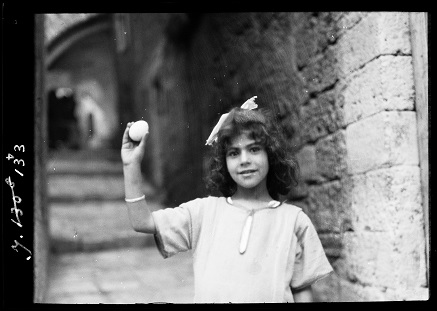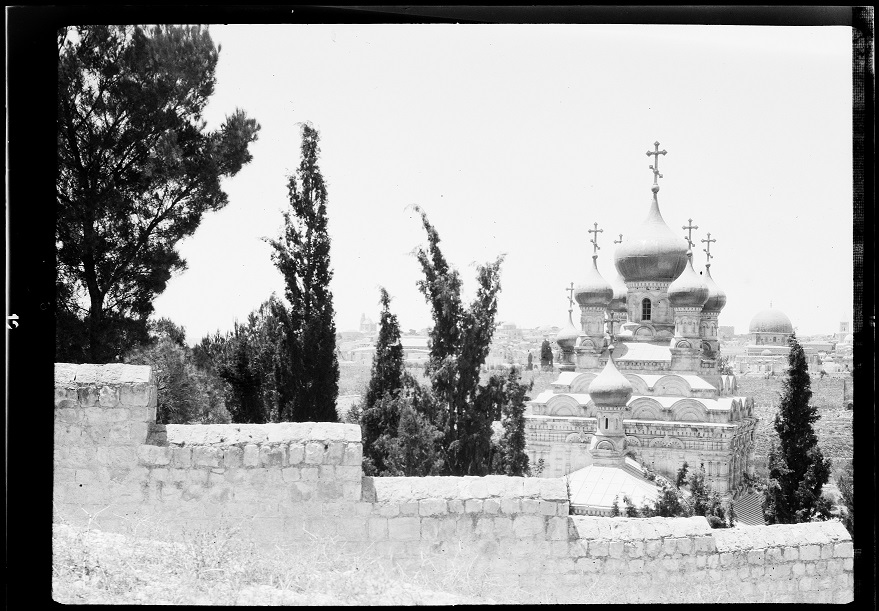Photographing the ‘Holy Land’
The entire Frank Scholten collection, consisting of 12,000 negatives and 14,000 prints, represents a work in progress towards a 16-volume set of books on the ‘Holy Land’, only two volumes of which were published. As such, the original photographic prints are small and some of the negatives show signs of editing with white marks. There are also several photographic albums. Except for a two-volume book of his photographs, published in short runs first in French, then German, English and only one of the two volumes in his native Dutch, Scholten’s sole exhibition Palestine in Transition was held at the Brook Street Art Gallery in London, February 25th to 19th, 1924 (unfortunately no catalogue exists from this exhibition).
The landscapes of the ‘Holy Land’ have long been of interest to Western photographers and histories of photography in Palestine have been entwined in very particularised modes of imaging. The first photograph of Jerusalem was taken in 1839 by Frédéric Goupil-Fesquet, making Jerusalem one of the first cities outside of Europe to photographed.
The holy sites and biblical histories of Palestine became a source of fascination for European photographers, both ‘scientific’ and commercial. Photographers like Auguste Salzmann attempted to employ a ‘scientific’ methodology using photography in his attempt to prove C. de Saulcy’s theory that the physical remains of Jerusalem dated from the time of Solomon, rather than the Roman period. Commercial photographers like Félix Bonfils produced a vast quantity of images in the region often as photobooks and souvenir postcards to feed the growing Western appetite for the ‘Holy Land’.
Apart from being prolific, Frank Scholten’s work is incredibly diverse covering subjects as broad as events, both religious and secular, architectural explorations from villages that no longer exist to major cities like Jaffa, Haifa, Jerusalem and the fledgling township Tel Aviv, which was but a decade old when he arrived. He photographed historical and archaeological sites alongside modern building projects as well as various Jewish and German colonies. And, of course, he photographed people. Perhaps one of the hallmarks of Scholten’s collected works is the thoroughness with which he imaged Palestine. His images of people cut across religious and confessional lines, ethnic backgrounds, class and urban-rural divides. He imaged people at work as well as in their leisure time, but most of all, he imaged people in the context of their daily life, rather than divorced from the landscape.
Scholten’s approach was pluralistic. He read theological texts that ranged from Protestant to Catholic, he read socialist material, Zionist histories, he referenced texts in Dutch, French, German, Italian, and approximately half of what he read was also in English. He read different translations of the Bible cross referencing them against one another, showing a level of scholarly textual analysis.
| Last modified: | 17 October 2023 1.42 p.m. |



